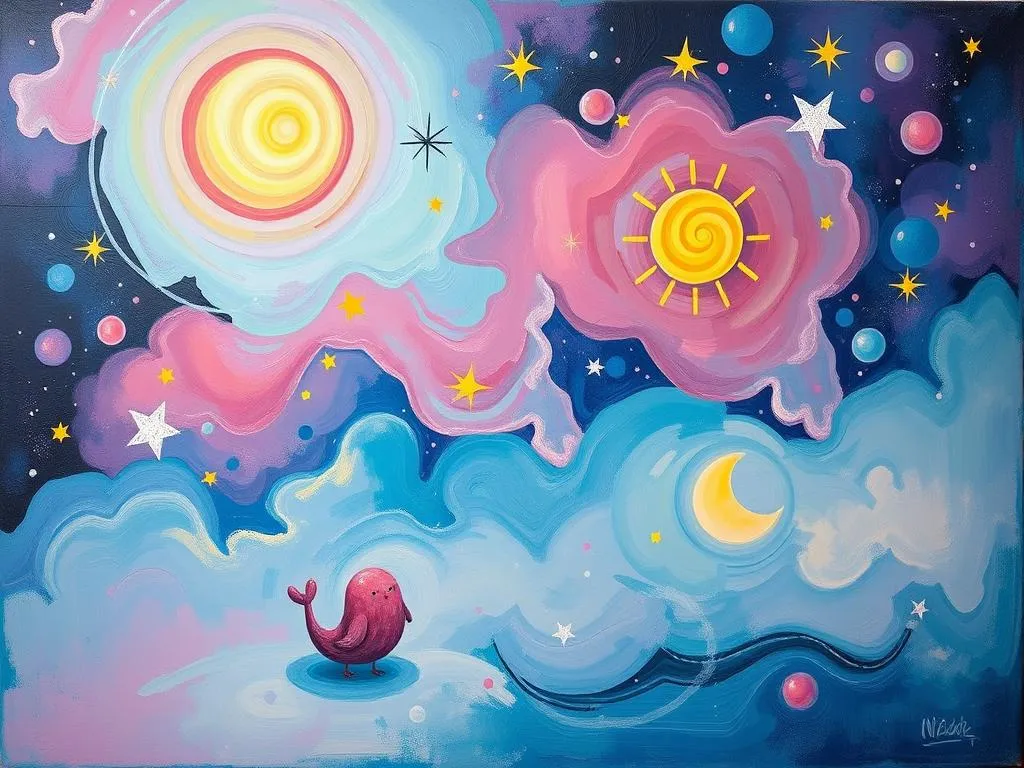
Dreams have long fascinated humanity, serving as a bridge between our conscious realities and the depths of our subconscious. They are a tapestry woven from our thoughts, experiences, and emotions, often overflowing with symbols that carry deep meanings. The exploration of these symbols and their interpretations is not merely an academic exercise; it resonates on a personal level, unlocking insights about ourselves and our lives. Engaging with our dreams can enhance self-awareness, provide clarity in our waking lives, and even guide us through challenges. In this article, we will delve into the rich world of subconscious dream symbols, examining their meanings, variations, and connections to our daily experiences.
Symbolism and Meaning
At the heart of dream analysis lies symbolism—the use of images and motifs to represent underlying thoughts and emotions. Common symbols can vary dramatically across cultures and personal experiences, but certain themes frequently emerge.
For instance, water is a prevalent symbol in dreams. It often signifies emotions and the subconscious mind. Calm waters may represent peace and tranquility, while turbulent waters can indicate emotional turmoil or uncertainty. When dreaming of water, consider your feelings towards it. Were you swimming joyfully, or were you struggling against the waves? This context can drastically alter the symbol’s meaning.
Another common symbol is flight. Dreaming of flying can evoke feelings of freedom and liberation. However, if the flight is accompanied by fear or struggle, it might indicate a desire to escape from pressures or responsibilities in waking life. This duality reflects the complexity of our emotions and desires, suggesting that even seemingly positive symbols can carry underlying anxieties.
Houses are also significant symbols in dreams, often representing the self or the dreamer’s psyche. The condition of the house—whether it is well-kept or in disrepair—can reveal insights about how one perceives their life and mental state. For example, a dream of a cluttered or haunted house may indicate unresolved issues or fears, while a spacious, well-decorated home can reflect confidence and stability.
Animals frequently appear in dreams, embodying instincts and emotions. A lion may symbolize courage and strength, while a snake could represent deceit or transformation. The specific animal and the context in which it appears are critical for interpretation. For instance, dreaming of a friendly dog may signify loyalty and companionship, whereas a threatening wolf could indicate feelings of fear or vulnerability.
In addition to these examples, colors in dreams can also carry significance. The color red might evoke passion or anger, while blue could denote calmness or sadness. The emotions tied to these colors can provide additional layers to the dream’s meaning, prompting the dreamer to reflect on their feelings in waking life.
Ultimately, the interpretation of dream symbols is highly personal. The meanings can shift based on individual experiences, cultural background, and emotional context. Thus, understanding the symbols in your dreams invites you to explore your own feelings, experiences, and aspirations, opening the door to deeper self-awareness.
Key Scenarios and Variations
While certain symbols recur across various dreams, the scenarios in which they appear can significantly alter their meanings. For instance, a dream about losing your way in a labyrinth might symbolize confusion or feeling trapped in your waking life. However, if you find your way out, the dream could represent a journey of self-discovery and overcoming obstacles. The outcome of the dream scenario plays a crucial role in shaping its interpretation.
Consider a scenario where you dream of public speaking. If you experience anxiety or fear about forgetting your lines, this may reflect fears about how others perceive you in real life. Conversely, if you feel confident and well-received during the speech, it could signify self-assurance and readiness to express yourself. The emotional tone during the dream offers valuable clues to your waking life circumstances.
Dreams about relationships also exhibit significant variations. For example, dreaming of an ex-partner can evoke feelings of nostalgia or unresolved feelings. If the dream involves reconciliation, it may symbolize a desire for closure or healing. Conversely, if the dream is fraught with conflict, it might reflect lingering emotional pain or issues needing to be addressed.
Another common scenario involves getting lost or being chased. In dreams where you are being pursued, the identity of the pursuer can provide insight into what you may be avoiding or fearing in your waking life. If you are running from a shadowy figure, it might symbolize anxiety or an unresolved conflict. However, if you are being chased in a lighthearted manner, it could reflect a playful aspect of your personality or a desire for adventure.
Recurrent dreams also play a significant role in understanding subconscious messages. When a dream recurs, it often indicates unresolved issues or emotions that demand attention. For example, if you frequently dream about failing a test, it may signify feelings of inadequacy or fear of failure. Recognizing the patterns in your dreams can lead to profound insights about the aspects of your life that require reflection and action.
In examining these variations, it is crucial to consider the emotions felt during the dream. Emotions are often the key that unlocks the meaning behind the symbols, revealing insights that might otherwise go unnoticed. Dreams are not merely narratives; they are rich, symbolic landscapes filled with personal meaning waiting to be explored.
Real-Life Connections and Takeaways
Understanding the symbols and scenarios in your dreams can lead to valuable insights about your waking life. Reflecting on these dreams encourages a deeper connection with your subconscious and can illuminate pathways for self-improvement and growth. Here are some practical steps to guide this process:
First, keep a dream journal. Recording your dreams shortly after waking can help you capture the details and emotions before they fade. Over time, patterns and recurring symbols may emerge, enabling you to connect these insights to your daily experiences. This practice fosters self-reflection and provides a reference point for understanding the evolution of your dreams.
Next, reflect on your emotions. When interpreting dreams, consider how you felt during the experience and upon waking. Emotions serve as powerful indicators of what you may be grappling with in your waking life. For instance, if you often dream of being unprepared for an important event, it may signify anxiety about an upcoming challenge or uncertainty about your abilities. Acknowledging these feelings can prompt you to address them more consciously.
Another valuable practice is to explore the symbols in your dreams through creative outlets. Engaging in art, writing, or meditation can provide a fresh perspective on the meanings behind your dreams. For example, if you dream of a specific animal, consider drawing or writing about it. This creative exploration may reveal new insights and foster a deeper understanding of your subconscious messages.
Additionally, consider discussing your dreams with trusted friends or a therapist. Sharing your experiences can provide new perspectives and facilitate meaningful conversations about your thoughts and emotions. Sometimes, an outside perspective can illuminate connections you may not have considered.
Finally, approach your dreams with curiosity rather than judgment. Embrace the process of discovery and allow yourself to explore various interpretations without immediately seeking definitive answers. This open-mindedness can lead to richer insights and a more profound connection with your subconscious.
In conclusion, dreams serve as a powerful tool for self-exploration and reflection. By examining the symbols, scenarios, and emotions within your dreams, you can unlock valuable insights into your waking life. Embrace the journey of understanding your subconscious messages, and allow them to guide you toward personal growth and self-awareness. The world of dreams is vast and intricate; take the time to explore its depths, and you may uncover hidden treasures that can illuminate your path forward.







